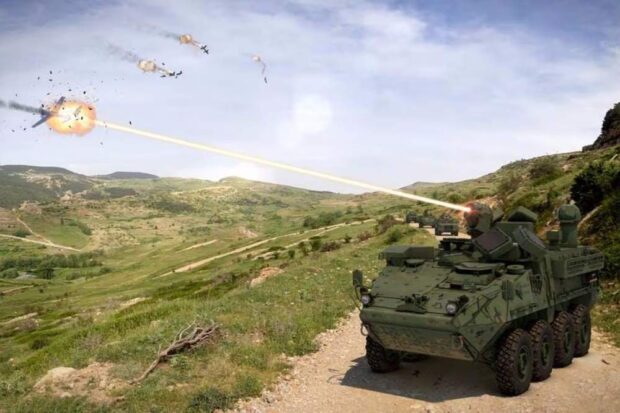Taiwan is building a new weapon system comprised of a laser mounted on an armoured vehicle to counter the threat of Chinese drones.
Sources revealed on March 5 that after completing research on a prototype low-powered vehicle-mounted laser cannon last year, with the help of “international friends,” the National Chungshan Institute of Science and Technology (NCSIST) had successfully developed a 50 kW laser cannon. It is to be mounted on CM-32 Clouded Leopard armoured vehicles and is set to enter the testing phase this year.
The U.S. military recently sent four Stryker armored vehicles equipped with a 50kW Directed Energy Maneuver-Short Range Air Defense (DE M-SHORAD) system to the Middle East for field testing. The purpose was to evaluate the effectiveness of lasers in harsh environments such as sandstorms and to examine their ability to intercept unmanned aerial vehicles and other aircraft.
High-energy laser weapons are one of the weapon systems that various countries are competing to develop. A 50 kW laser has sufficient power to take down suicide drones, slow-speed aircraft, and other aerial threats. The NCSIST is developing the system under the codename “Lightning Protection Project” (雷護專案).
The second phase of development is currently underway and it is being integrated with Clouded Leopard eight-wheeled armoured vehicles for testing.
The senior government source told LTN that the project is continuing to achieve technological breakthroughs, “thanks to technical guidance provided by countries friendly to Taiwan.” This guidance has enabled Taiwan to advance laser development, progressing from low power to medium power within a short period.
The goal is to complete research and testing this year, show it to the armed forces, and develop it into a domestically produced weapon system that can be purchased by the military.
NCSIST researchers have also published articles in military publications discussing how to integrate laser weapon systems with the Army’s AN/TWQ-1 Avenger air defense vehicles to counter and intercept enemy rockets and medium to large-sized unmanned aerial vehicles.
High-energy laser weapons offer significant cost advantages, with each shot costing only a few dollars. Taking Israel as an example, the Tamir interceptor missile used in the Iron Dome air defense system is estimated to cost between US$40,000 and $50,000 (approximately NT$1.28 million to NT$1.61 million) per missile. According to former Israeli Prime Minister Naftali Bennett, using laser air defense weapons for interception is cost-effective, with each shot costing only US$3.50.
Photo: Raytheon 50-KW laser on Stryker
Source: Taiwan News;

